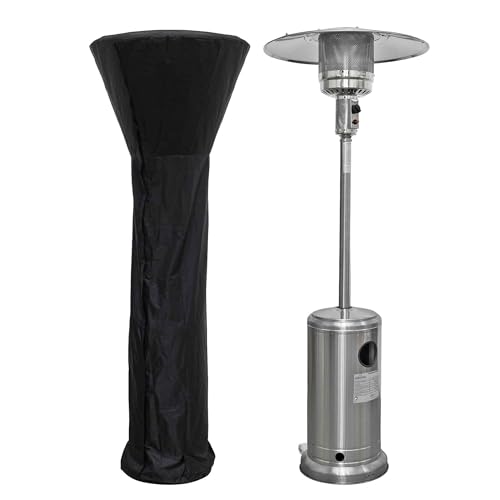Buying Gas Radiant Heaters: A Comprehensive Guide
Gas radiant heaters have acquired appeal in the last few years for their effectiveness and ability to provide instant warmth. As more property owners and organizations search for methods to keep their spaces comfortable, understanding the functions, benefits, and considerations when buying these heating units can be very useful. This article explores the complexities of gas radiant heaters, aiding possible buyers in making informed choices.
What are Gas Radiant Heaters?
Gas radiant heaters are devices that make use of propane or natural gas to give off heat straight into a space. Rather than heating Patio Heating Equipment , they warm objects and people in their vicinity, offering convenience quicker and efficiently. These heaters are popular for both indoor and outdoor settings due to their versatility and effectiveness.
Secret Features of Gas Radiant Heaters
- Direct Heating: Unlike conventional heaters that warm the air, gas radiant heaters supply direct warmth, making them an efficient option for rapidly warming up spaces.
- Mobility: Many models are available as portable systems, permitting them to be quickly moved from one area to another.
- Fuel Variety: Gas radiant heaters can be powered by natural gas or propane, providing users versatility based upon schedule and preference.
- Adjustable Settings: Most gas radiant heaters come with adjustable heat settings, permitting users to tailor the level of warmth based on their needs.
Advantages of Gas Radiant Heaters
- Energy Efficiency: These heaters convert gas into heat efficiently, resulting in lower utility expenses compared to electric heaters.
- Quick Heating: Radiant heat is felt practically instantly, making these heaters perfect for sudden temperature level drops.
- Low Maintenance: Gas radiant heaters usually require less upkeep than electric models, making them a problem-free alternative.
- Ecologically Friendly: When powered by clean natural gas, these heaters can be a more ecologically sustainable option compared to other heating approaches.
Types of Gas Radiant Heaters
When it comes to picking a gas radiant heater, it's vital to understand the various types available. Below are the most common options:
- Indoor Gas Radiant Heaters: Designed for indoor spaces, these heaters are usually vented or unvented and frequently featured integrated security functions.
- Outdoor Gas Radiant Heaters: Commonly used in patios or outdoor dining locations, these heaters are developed to hold up against the components.
- Wall-Mounted Gas Radiant Heaters: A space-saving option, these systems are ideal for smaller sized areas and can be equipped with different heat outputs depending upon the location's needs.
- Freestanding Gas Radiant Heaters: These portable designs can be used in different places, best for those who need flexibility.
Purchasing Guide: How to Choose the Right Gas Radiant Heater
When acquiring a gas radiant heater, several factors must be considered to guarantee you choose the best design for your space:
1. Heating Capacity
- Measured in BTUs (British Thermal Units), the heater's capacity determines just how much area it can effectively warm. Buyers must examine their particular needs based on space size.
| Space Size (sq feet) | Recommended BTUs (for Gas Radiant Heaters) |
|---|---|
| 100 - 200 | 5,000 - 10,000 BTUs |
| 200 - 400 | 10,000 - 20,000 BTUs |
| 400 - 600 | 20,000 - 30,000 BTUs |
| 600 - 800 | 30,000+ BTUs |
2. Kind of Gas
- Think about whether you will be using propane or natural gas, as various heaters cater to different fuel types.
3. Security Features
- Try to find models equipped with safety functions such as automatic shut-off valves, tip-over protection, and oxygen depletion sensors.
4. Installation Requirements
- Some heaters may require professional setup, specifically vented models. Make sure to consider the costs and requirements related to setup.
5. Portability
- If flexibility is vital, consider portable models that can be quickly moved from one location to another.
Setup and Maintenance
Gas radiant heaters are typically simple to set up, especially portable models. However, vented options might necessitate professional setup to guarantee they meet regional safety codes.
Maintenance normally includes:
- Regular cleansing to avoid dust accumulation.
- Examining gas connections and fittings for leakages.
- Making sure safety features are functional.
Idea: Regular checks around the unit can help extend its life-span and keep security.
Frequently Asked Questions (FAQs)
Q1: Are gas radiant heaters safe for indoor use?A1: Yes
, as long as they are effectively vented and equipped with required security features, they can be safely utilized indoors.
Q2: Can gas radiant heaters be used in enclosed spaces?A2: Unvented gas heaters can position dangers in enclosed areas due to potential suffocation or carbon monoxide gas accumulation. Always guarantee enough ventilation. Q3: How do I know what size heater I need? Patio Heating Equipment : The proper size depends on the area you plan to heat. Refer to the BTU chart
above to identify your requirements. Q4: What is the distinction in between propane and gas heaters?A4: The primary difference lies in their energy source
; propane is provided by means of tanks, while gas is usually piped into homes. Q5: How can I maximize efficiency?A5: Ensure the heater is appropriately sized for your space, preserve it regularly, and consider using it in mix
with other heating approaches for optimum comfort. Gas radiant heaters can be a great addition to any home or company, offering energy-efficient and quick heating solutions. By understanding the different types, functions, and considerations
when buying, buyers can make educated decisions that meet their heating needs. With the best option, these heaters supply comfort, dependability, and an inviting environment during colder seasons.

